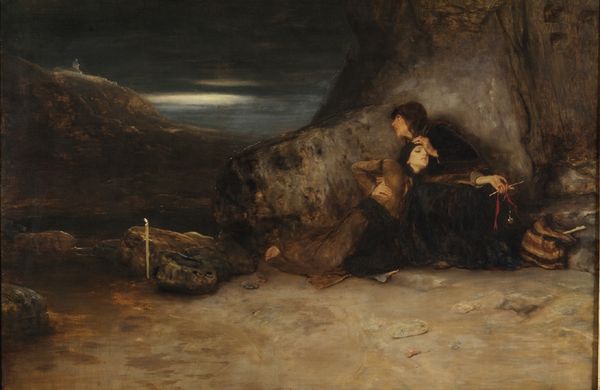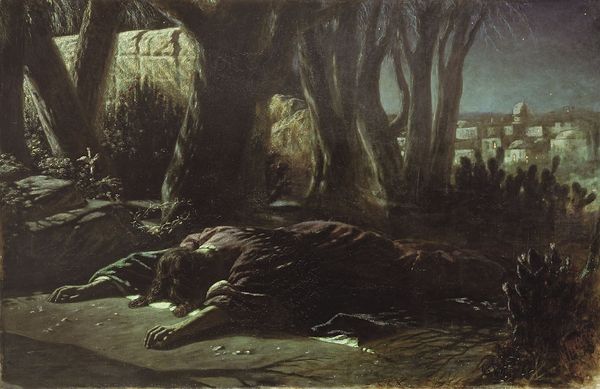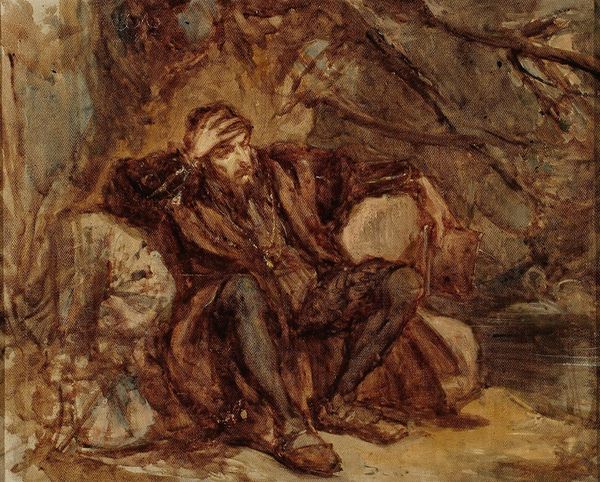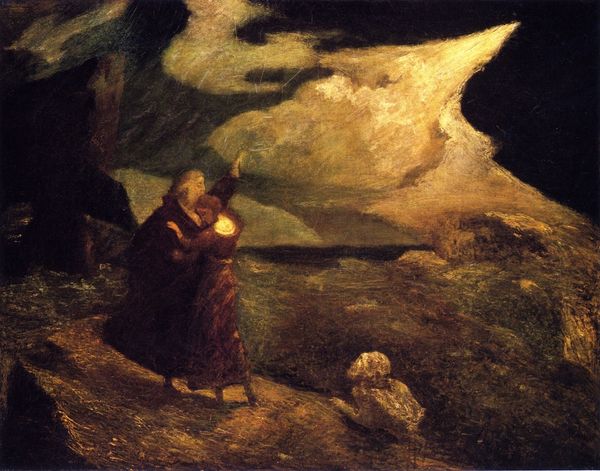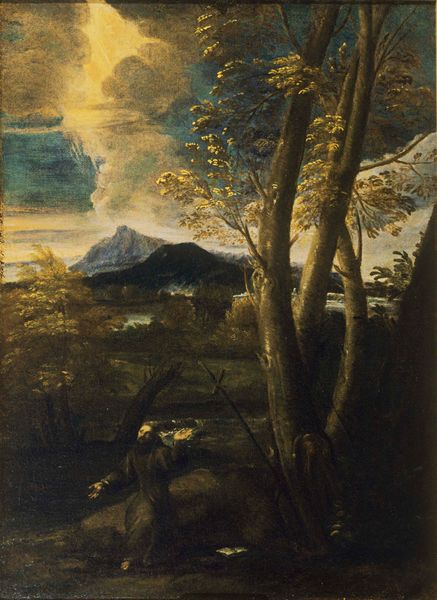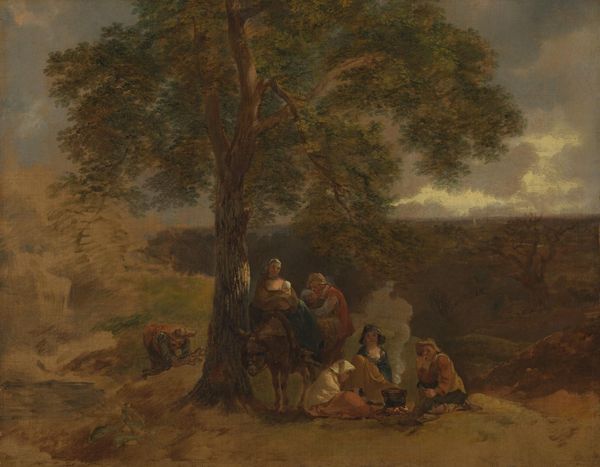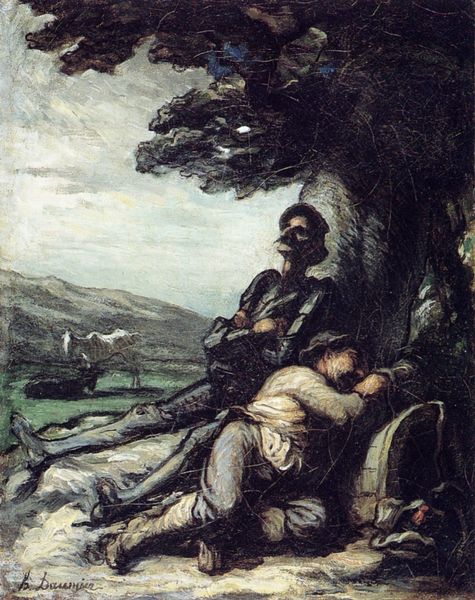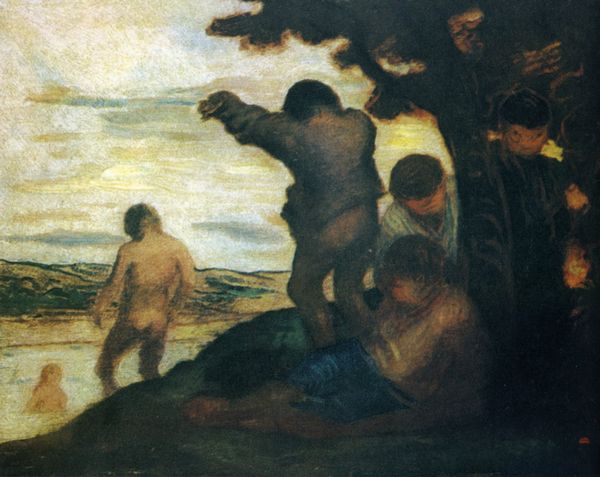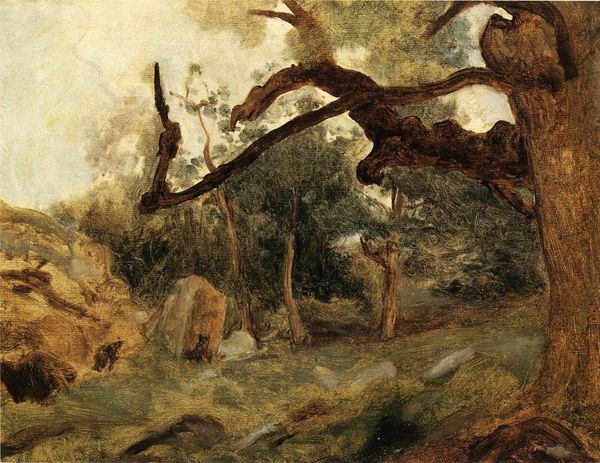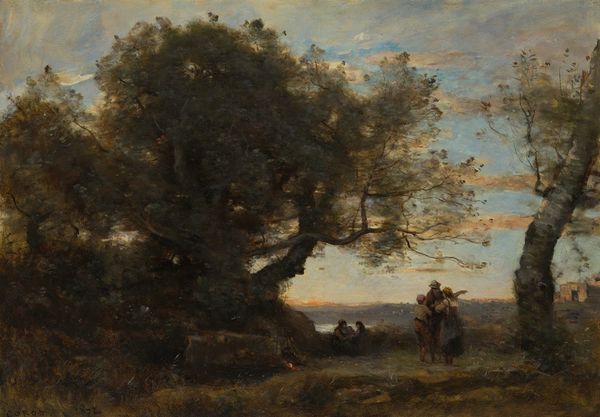
Copyright: Public Domain: Artvee
Editor: Here we have Honoré Daumier's "Sancho Pansa, unter einem Baum ausruhend," painted sometime between 1860 and 1870, using oil on canvas. The somber tones and the figure's hunched posture under the imposing tree evoke a feeling of melancholy and weariness. What compositional elements strike you most profoundly in this piece? Curator: The relationship between figure and ground is key. Observe how Daumier uses the tree's form as a dominant vertical axis, contrasting with the horizontal landscape. The figure of Sancho Panza is subordinate to this structure, both visually and conceptually. Note also the palette: a restrained use of earth tones punctuated by subtle blues and greens in the foliage, a formal device for leading the eye upward. The impasto technique, evident in the tree's bark, further emphasizes texture and volume. Editor: That’s interesting! I hadn’t considered the ground playing such an important part. Are there specific elements Daumier employed to draw attention to form? Curator: Precisely. Focus on the rendering of light and shadow across the figure and the tree. Daumier uses chiaroscuro not to create realistic form, but to create mood and enhance the monumentality of the tree in relation to the subject. The loose brushstrokes serve to unify the composition, abstracting the forms while maintaining legibility. One could interpret the visible brushwork as a signifier of the artist's presence and engagement with the materiality of paint itself. Editor: That’s such a fascinating reading. I’ll definitely pay closer attention to brushwork now. Curator: Indeed, it's a good starting point to understanding this piece. Hopefully next time we can move on to colour or technique, and consider how those elements contribute.
Comments
No comments
Be the first to comment and join the conversation on the ultimate creative platform.

